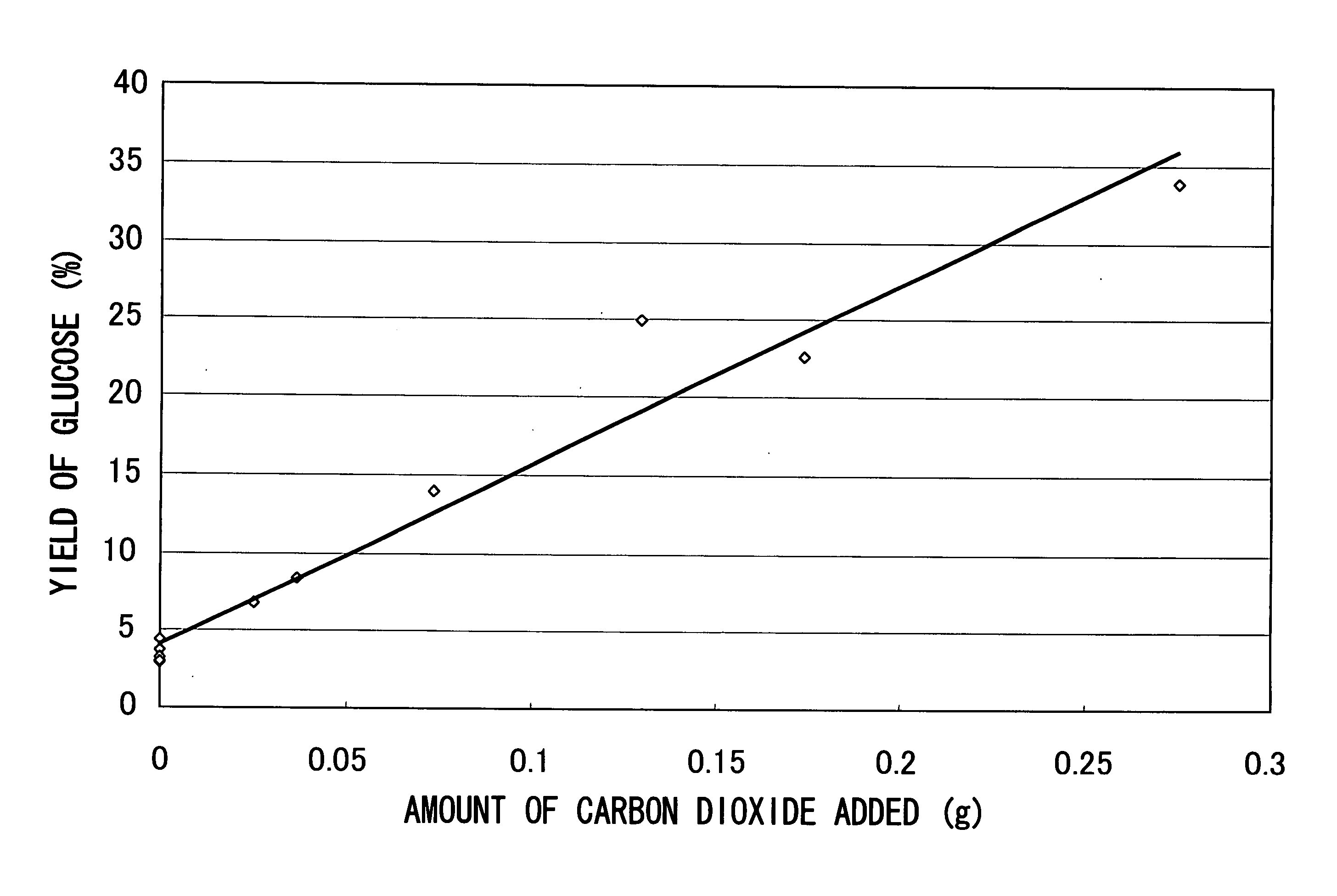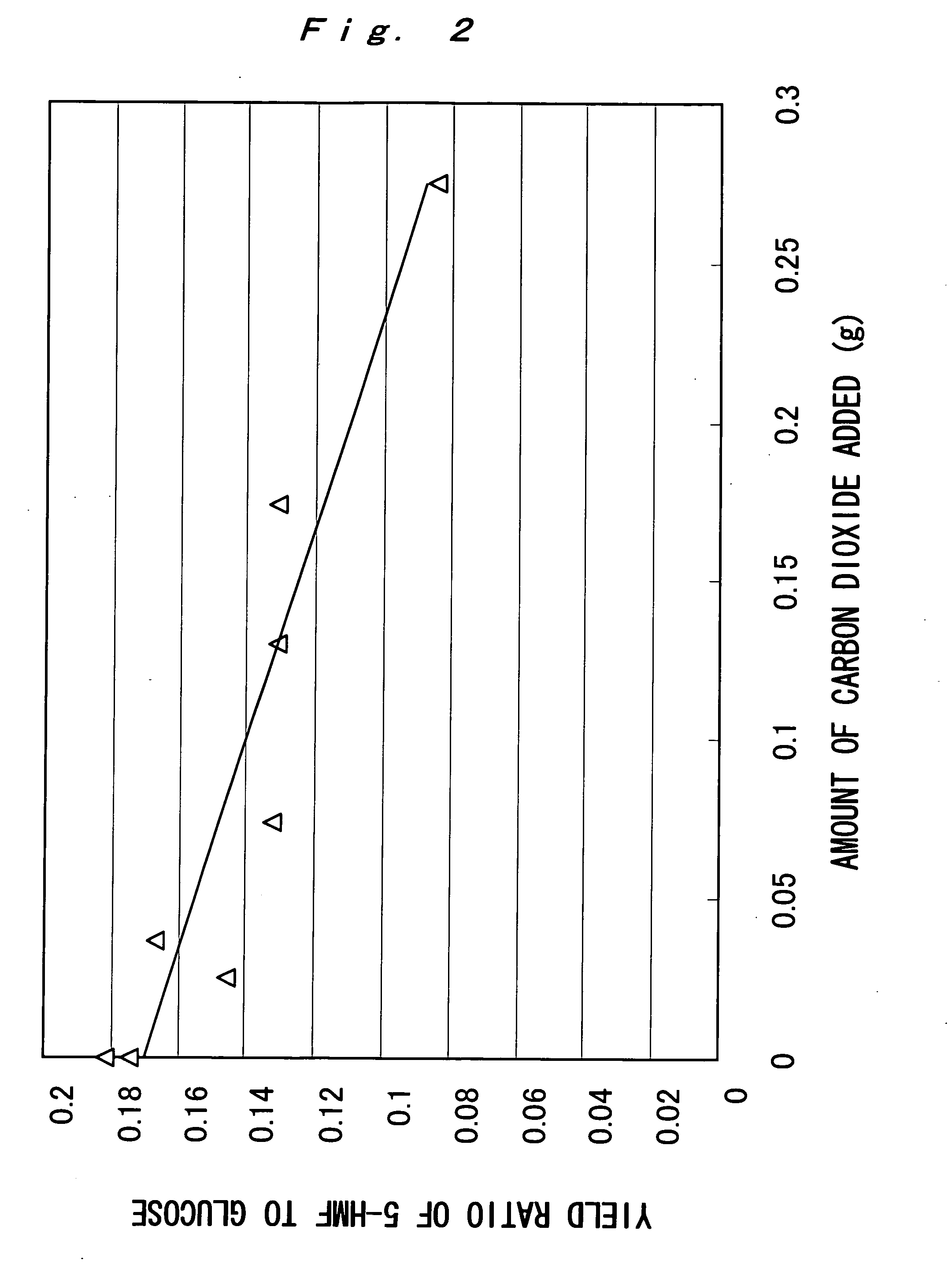Method of Hydrolyzing an Organic Compound
a technology of organic compounds and hydrolysis methods, which is applied in the production of glucose, saccharides, sugar industry, etc., can solve the problems of increasing the cost of enzyme hydrolysis
- Summary
- Abstract
- Description
- Claims
- Application Information
AI Technical Summary
Benefits of technology
Problems solved by technology
Method used
Image
Examples
example 1
[0051] 0.03 g of starch and 3 mL of water were placed in a small batch reactor of room temperature (volume: 3.6 mL), and a predetermined amount (g) of solid carbon dioxide (dry ice) was further introduced. Then, the reactor was closed and was put in a molten salt bath maintained at 200° C. to initiate the hydrothermal reaction. After, 15 minutes, the reactor was pulled out from the molten salt bath and quenched with water to stop the reaction. Note that the reason why the molten salt bath was used herein is to reach a predetermined temperature in a shorter time compared to an electric furnace heating system, and it reaches a predetermined temperature for about 1 minute.
[0052] In the above-described experiment, in the case that the reaction was performed without introducing carbon dioxide, the pH value of the reaction solution was 3.6 after completion of the reaction. The pH value of the reaction solution was lowered after the completion of the reaction due to reaction products. On ...
example 2
[0060] The test was performed in the same way as in Example 1 except that: agar was used instead of starch as a material; the temperature of hot water was changed to 160° C.; and the reaction time was changed to 15 minutes and 30 minutes. The results are shown in the graph of FIG. 3. As is apparent from FIG. 3, in the case of the agar, the monosaccharide could hardly be yielded only by hot water, but the yield of the monosaccharide was found to significantly increase by hydrolysis through the hydrothermal reaction using hot water and carbon dioxide in combination compared to hydrolysis with only hot water.
example 3
[0061] The test was performed in the same way as in Example 1 except that guar gum was used instead of starch as a material. The results are shown in the graph of FIG. 4. As is apparent from FIG. 4, in the case of the guar gum, the yields of the monosaccharides were found to increase by hydrolysis through the hydrothermal reaction using hot water and carbon dioxide in combination compared to hydrolysis with only hot water.
PUM
| Property | Measurement | Unit |
|---|---|---|
| temperature | aaaaa | aaaaa |
| pressure | aaaaa | aaaaa |
| critical temperature | aaaaa | aaaaa |
Abstract
Description
Claims
Application Information
 Login to View More
Login to View More - R&D
- Intellectual Property
- Life Sciences
- Materials
- Tech Scout
- Unparalleled Data Quality
- Higher Quality Content
- 60% Fewer Hallucinations
Browse by: Latest US Patents, China's latest patents, Technical Efficacy Thesaurus, Application Domain, Technology Topic, Popular Technical Reports.
© 2025 PatSnap. All rights reserved.Legal|Privacy policy|Modern Slavery Act Transparency Statement|Sitemap|About US| Contact US: help@patsnap.com



